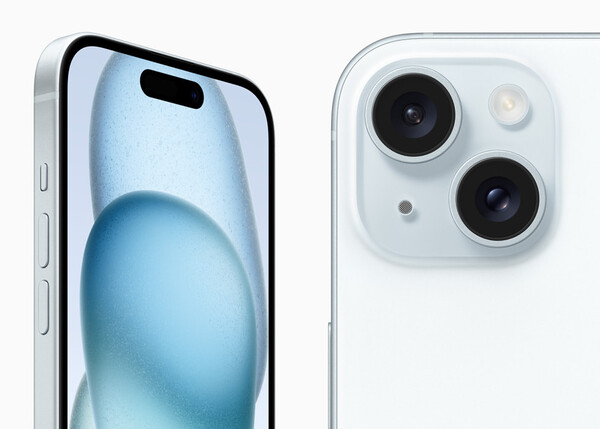[KH Explains] China ups OLED ante to take over Korean shares
Competition likely to heat up to secure more Apple orders
By Jo He-rimPublished : Dec. 5, 2023 - 17:02

China’s recent move to ramp up investment in organic light-emitting display panels is stoking fears among Korean display makers that they may face another fierce price war with their Chinese runner-ups, even over the most sophisticated display technology.
Last week, China's top display panel maker, BOE Technology, announced a plan to invest 63 billion yuan ($8.84 billion) to build a production facility with 8.6-generation technology for OLED panels for laptops and tablet PCs.
The amount of investment is almost three times higher than that of Samsung Display.
In April this year, Samsung, Korea's top display maker which is currently leading the global OLED market for IT devices, announced that it would put 4.1 trillion won into building its 8.6-generation OLED plant. Generation refers to the size of the glass substrates used to cut out the OLED panels. A bigger number means bigger substrates, meaning more panels can be manufactured in one process.
“The situation appears to be similar to how Chinese firms took over the LCD market," an industry expert said on condition of anonymity. He was referring to how Chinese companies took over the share of the global LCD market in recent years, prompting dominant Korean players to shift their business to the more advanced OLED panels.
"BOE may struggle in its attempt to close the gap with Korean companies now, but it will eventually improve its yield rate. It is a threatening situation for Korean display makers."
China’s strategy is usually to first offer products at cheaper prices to sell as much as possible, raising the yield rate in the production line as they go along, and then move on to high-value product sales.
In the OLED market, Korean companies have maintained their competitive edge for years. According to Display Supply Chain Consultants, a market tracker, Samsung took the world's biggest share in OLED panels with 62.8 percent by value last year. LG Display was the runner-up with 19.7 percent, while BOE stood in third with 8.6 percent.
Chinese firms are increasing their share in the smartphone OLED panel sector. According to Stone Partners, a market tracker, Chinese panel makers including BOE and China Star Optoelectronics Technology took up 50.2 percent of the global shipment of smartphone OLED panels in the April-June period this year, beating that of Korea's for the first time.
While it took some 10 years for Chinese firms to catch up to Samsung, experts anticipate it will need less time for IT gadgets, as the period of investment is only two to three years apart.
"Samsung was the first to invest in an 8.6 generation facility and BOE is the second. But they are practically standing on the same starting line," the expert added.
The Korean industry is aware of China’s attempt to compete in the OLED panel market for IT devices. But they are confident that they hold the upper hand in technology and experience.
“For IT panels, it is basically how much of the orders a company secures from Apple. BOE has been trying every year only to fail. It is hard to make predictions (on future deals), but Korean display makers do have more experience in the OLED market for IT products,” an industry official said under the condition of anonymity.
“When you look at the amount of investment, and the number of shipments, (Chinese companies) can be seen as threatening. But it is more important to look at how much of those numbers are ‘meaningful’ in terms of quality and value."
Apple, the world's leading smartphone maker, requires a total of 10 million OLED panels for its iPads next year. LG Display is expected to provide 60 percent of the supply, while Samsung Display is responsible for producing the rest.
In 2021, LG Display announced an investment plan to develop small and mid-sized OLED panels for IT devices, amounting to some 3.3 trillion won. Under the plan, it added new production lines for 6-generation panels in Paju, Gyeonggi Province, where it will mass produce the panels for Apple's iPad Pro in February next year.
LG Display's 6-generation facility would increase the production capacity to 60,000 from the current 30,000. BOE's production capacity of the envisioned facility will be equivalent to 32,000 glass substrates monthly, while Samsung Display's new 8.6-generation facility aims to process 15,000 substrates monthly.
While LG Display revealed it has no plan to adopt the 8.6-generation technology for now, industry watchers say the difference in the production technology could lead the Korean supplier to fall behind its rivals in terms of quantity in the long run.
“It will take some time for Samsung and BOE to start mass production in their envisioned plants, but once the factories start running, they will hold an advantage in the long run," an industry expert said.
For Korean companies to continue their lead in the rising OLED market for IT products, the key lies in securing strong business relations with the buyers.
“(The solution) is in how companies build their relationship with their clients. For instance, who takes how much of Apple’s order will decide the profitability of the panel makers," another industry official said.
Korean companies are also working to strengthen their product portfolios and increase investment in advanced technology.
Samsung for instance, is working on new technologies such as organic light-emitting diodes on silicon, which can be used in microdisplays for virtual reality devices and smartwatches. These are panels that are small in size, and can create ultra-high-definition while maintaining energy-efficiency.



















